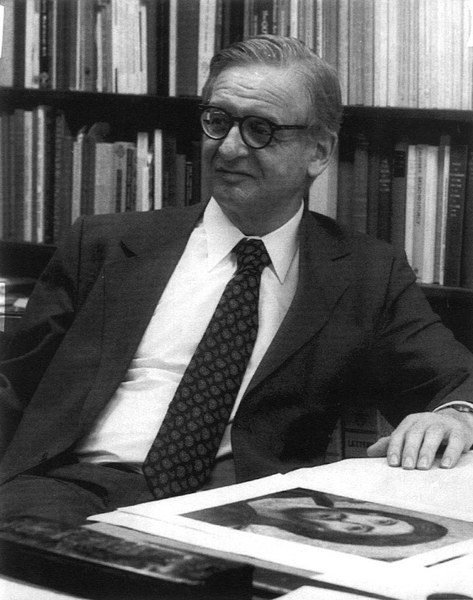Byzantine art historian Kurt Weitzmann, a professor at Princeton University, had a long, informal relationship with Dumbarton Oaks, eventually becoming a visiting scholar in the 1970s and participating in symposia and publications at Dumbarton Oaks throughout his career. He also advised on acquisitions for the Byzantine Collection. He eventually donated to Dumbarton Oaks his extensive collection of photographs of Byzantine manuscripts, which are now housed in the Image Collections and Fieldwork Archives. The following are extracts from his paper “Byzantine Art and Scholarship in America,” published in the American Journal of Archaeology 51, no. 4 (October–December 1947): 394–418:
A few years ago a second center of studies in Byzantine art arose in this country at Dumbarton Oaks in Washington, D.C. After Mr. and Mrs. Robert Woods Bliss became interested in Byzantine art and began to collect Byzantine objects, they soon envisaged combining their collection with a research library. When in 1940 they made Dumbarton Oaks a generous gift to Harvard University, the establishment already contained a sizeable and workable library in the field of the arts which had been brought together in a very short time. . . . Since this transfer to Harvard University took place after the outbreak of the war, it was foreseen that a difficult period lay ahead, but it is a testimony to the vitality of this institution that in these trying years it developed almost immediately into a research center which today is firmly established and has taken its permanent place among the research institutions of America.
The end of the war has also made it possible to call visiting scholars from abroad for a certain length of time, and Dumbarton Oaks has been very fortunate to have had as its guest this year André Grabar from the Collège de France. Thus another ambition of the founders of Dumbarton Oaks has been realized, namely, the establishment of a close personal contact with European scholars. In the years to come scholars from other countries will be invited for a length of time, and in this respect Dumbarton Oaks fulfills a great mission by paving the way for closer international cooperation and mutual understanding.
The reputation of Dumbarton Oaks, as of any learned institution, will ultimately rest on the standard of its publications. Even before Dumbarton Oaks was donated to Harvard, plans had been made for the publication of a series of studies called “The Dumbarton Oaks Papers” to appear at irregular intervals. . . . The scope of the Papers was broadened and they were turned into an organ in which studies on all aspects of Byzantine culture, principally those of the scholars in residence, could be published. In the meantime, plans have been laid by A. M. Friend for another series consisting of larger monographs to include documentary studies of important single monuments or groups of monuments. . . . Some of them grew out of lecture series delivered during the yearly symposia about which we should like to say a few words.
Ever since the inaugural lectures in November, 1940, the idea had been cherished to have a symposium once a year which would bring together the scholars in the Early Christian and Byzantine field. The beginning was made by the late E. K. Rand when in the spring of 1942 he gathered a number of his former students to present papers on a variety of subjects. But beginning in the following year the symposium began to crystallize around a central topic, and thus took on a distinct character different from the annual meetings of learned societies in which a great number of short papers are usually presented.
In outlining briefly the activities of the Dumbarton Oaks Research Library and Collection we are fully aware that we have not described their full scope, but, in accordance with the purpose of this report, have primarily stressed the work in the Fine Arts. Yet it must be emphasized once more that the aim of this institution is not exclusively the furtherance of the knowledge of Byzantine art, but the study and integration of all aspects of Byzantine history and culture so that ultimately a coherent picture of this great civilization can be achieved, although art and archaeology will remain the focus by the very nature of the foundation.

